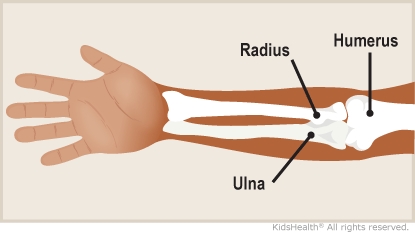A fractured elbow means that one of the three bones in the elbow is broken. A cast protects the bone while it heals. You can help your child heal well by keeping follow-up appointments and taking good care of the cast.


Daily cast care:
Problems to watch for:
Be sure to:



How do kids get an elbow fracture? Kids can break a bone in the elbow during play or sports. Often, this happens when an arm is stretched out to stop a fall.
What does the cast do? The cast is made of fiberglass or plaster with soft padding inside. It supports and protects the broken bone while it heals. It might feel snug, but it shouldn't feel too tight or painful. It can feel heavy, so your child might wear a sling around the neck and over the cast for support.
How long will my child have a cast? That depends on the type of injury and how your child is healing. Healing time varies, but a cast usually is worn for 3–4 weeks.
If no fracture was seen on the X-ray, why does my child have a cast? The elbow is an important and complicated joint where three bones come together. X-rays can't always show us everything we need to see. Sometimes, the broken bone is obvious on an X-ray. Other times, pain in the elbow or fluid collecting around the elbow joint is the only sign of a fracture.